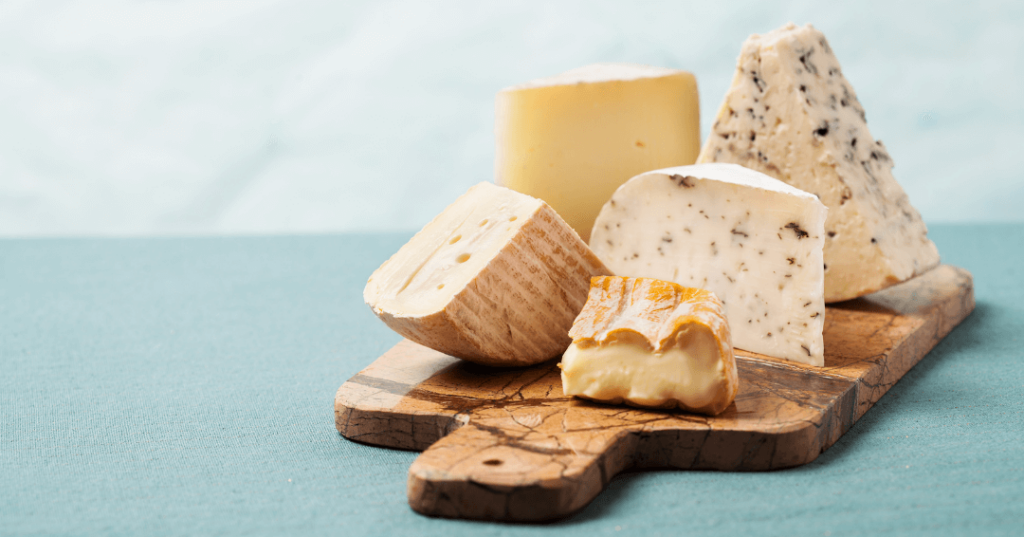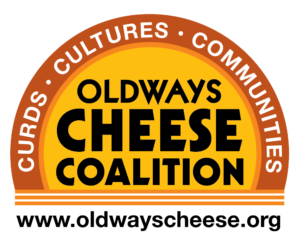
We love fall for many reasons: the cooler temperatures, the cozy soups, and, perhaps most of all, the creative uses for cheese. Cheeseboards aren’t the only way you can incorporate traditional cheeses into the cozy autumn equation. Traditional heritage cheeses are delicious, and they’re also versatile and can find a place in any meal, any time of day.

So, what exactly is a “traditional heritage cheese”? Traditional cheeses are made in accordance with time-tested techniques specific to different regions. This can mean (but is not exclusive to) using raw milk, making cheese in copper vats, or aging on wood boards and even in underground caves. Practices such as these are worth preserving as important parts of our global gastronomic heritage, and as a way to support rural communities around the world and nurture the diverse “friendly” bacteria that give cheeses their wonderful characteristics.
Not all traditional cheeses will feature all of these attributes, as cheesemaking practices vary from country to country and style by style. That’s the beauty of traditional cheese – getting to learn how different regions have perfected their own unique processes. From Greece to Switzerland, there are many traditional cheeses that are inextricably associated with their countries of origin. Here are just a few, and how to use them:
 Feta from Greece
Feta from Greece
You may know this cheese primarily as a delicious accompaniment to salads, but there are almost 2,000 years of history and plenty of diverse uses behind it. Traditional feta cheese, which is a PDO (Protected Designation of Origin) food, is only made with the milk of native breeds of sheep and goats, with a required fat content of at least 6 percent.
Feta is wonderfully versatile cheese. Try using it in this Greek Greens and Cheese Pie with Sprouted Whole Wheat Crust: the recipe is inspired by the leafy green filled pies of the Cyclades. Or, if you’re craving a salty appetizer, try this incredibly easy Feta and Olive Oil Dip.
 Halloumi from Cyprus
Halloumi from Cyprus
Referred to informally – and fondly – as “squeaky cheese,” halloumi has a unique spongy texture and a very high melting point. This makes it great for grilling or frying.
Although it has been produced for centuries, halloumi became a PDO food in 2021, meaning it must be made on the island of Cyprus according to the traditional recipe – which involves folding mint between layers of cheese to act as a natural preservative during the production of the cheese.
Try a more common method of cooking halloumi in these Roasted Pepper and Halloumi Wraps, or get a little adventurous and incorporate it into this Mediterranean Scramble.
 Parmigiano Reggiano from Italy
Parmigiano Reggiano from Italy
One of the largest players in the cheese world, Parmigiano Reggiano is a name-protected product from Italy that was invented almost 1,000 years ago. Only the cheese made following a series of specific steps, with the milk of cows from the region of origin, and made in a caseificio in the same region, can use this name.

The process to create Parmigiano Reggiano begins with raw milk and copper vats. From there, the rest of the traditional process unfolds like a dance. Because of its popularity, it’s important to check to ensure you’re getting the real deal.
Parmigiano Reggiano can be used in so many ways – it’s also a wonderful snack on its own. If you want to incorporate it into your cooking, try making Parmigiano Reggiano Shakshuka. In this Italian spin on Middle Eastern shakshuka, the cheese is the star, imparting a salty, umami flavor that perfectly complements the tomato sauce. It is also a great compliment to more underrated flavors, like in this Sheet Pan Berbere Fish with Crispy Parmigiano Reggiano Okra.

Le Gruyère AOP from Switzerland
Le Gruyère AOP is a semi-hard cheese made with unpasteurized cow’s milk and has been produced in Switzerland since the 12th century. Today, it is produced in the Swiss dairies where it was first made – in the district of La Gruyère in the Canton of Fribourg (Switzerland) and select surrounding areas.
As with other Protected Designation of Origin foods, Le Gruyère AOP has a distinct production process that is strictly followed by milk producers, cheese-makers and affineurs (maturers). The cows which produce milk for Gruyère AOP are solely fed on natural forage—fresh grass in summer and hay in winter, with no additives.
Le Gruyère AOP is fabulously multifaceted and can be eaten atop dishes, mixed into meals, and on its own! Try incorporating it into this delicious Asparagus Quiche or as the topping on this French Onion Soup.
We were lucky enough to visit Switzerland in 2023 and are currently planning another trip for September 2025! Stay tuned for more details!
Comté from France
Comté has been made for more than 1,000 years in the Jura Massif region of France, so its AOP/PDO status has been well-earned. This ancient cooked and pressed cheese is made from raw milk and results in wheels that each weigh about 80 pounds and measure 3 feet in diameter.

Photo courtesy of Comté
Montbéliarde and French Simmental cows are the only breeds authorized to produce the milk for this traditional cheese, which is made by about 2,400 dairy farms around the region. The cows graze in vast pastures from spring to autumn and eat local hay in the winter.
This special taste of France deserves a place on any festive cheeseboard but would also make for a delightful fondue! As with all of these heritage cheeses, Comté is a cheese that deserves to be used outside of the box.
Although there are specific guidelines when it comes to the production of these heritage cheeses, there are no rules regarding how they can be used in your own kitchen! Especially with International Raw Milk Cheese Appreciation Day around the corner on October 19, now is the time to try experimenting with the distinct flavors of traditional cheeses.
Still, for those who like to keep things tried and true – there’s always the option of a cheeseboard.
For more inspiration check out the Oldways Cheese Coalition on Instagram and subscribe to our monthly newsletter, The Cheese Plate.






Leave a comment